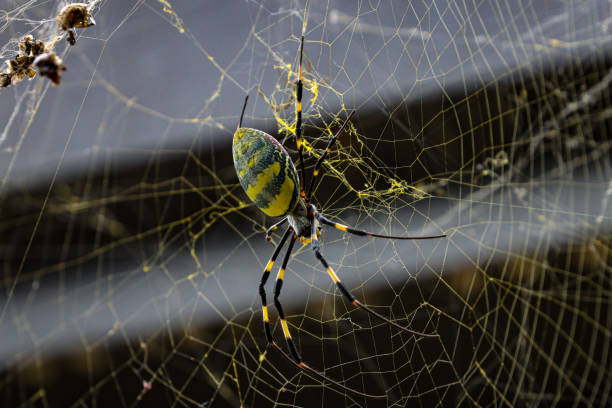Introduction
Meet the Joro spider, a truly remarkable and striking creature! You can spot it in the southeastern U.S., where it really catches the eye—like a golden thread woven into a beautiful tapestry. Originally hailing from East Asia, this colorful spider has piqued the interest of biologists, homeowners, and anyone with a curious mind. With its impressive size, vibrant colors, and gentle demeanor, it’s hard not to be fascinated. While many have expressed concern about the Joro spider spreading across North America, it turns out that studying it is more intriguing than it is alarming.
In this article, we’ll dive into the world of the Joro spider. We’ll look at its classification, habitat, diet, web-building techniques, and reproduction. Plus, you’ll discover how it impacts the environment. This piece aims to present a friendly perspective on this golden orb-weaver.
Scientific Classification
| Rank | Name |
|---|---|
| Kingdom | Animalia |
| Phylum | Arthropoda |
| Class | Arachnida |
| Order | Araneae |
| Family | Araneidae |
| Genus | Trichonephila |
| Species | T. clavata |
| Scientific Name | Trichonephila clavata |
Table of Contents
Description
The Joro spider, scientifically known as Trichonephila clavata, is a strikingly large orb-weaver that really catches the eye with its vibrant colors. Females are the real showstoppers, often growing up to 3 inches wide, including their legs! They flaunt a dazzling mix of bright yellow, black, and blue-gray, with a distinctive reddish spot on their underside.
Their long legs are beautifully striped in yellow and blue-black, giving them a unique look that resembles they’re wearing stylish stockings. In contrast, the males are quite small—typically just a quarter of the female’s size—and they don’t have the same vibrant flair.
What really sets the Joro spider apart is not just its appearance but also the golden hue of its silk. When the sunlight hits it just right, the silk sparkles, which is how this spider earned its nickname: the “golden orb-weaver.”
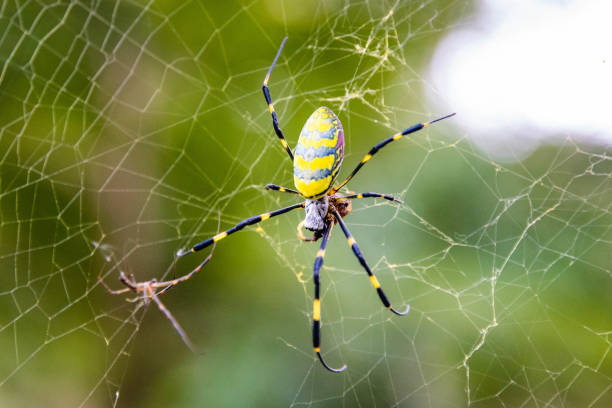
Distribution
The Joro spider comes from East Asia, mainly Japan, China, Korea, and Taiwan. Recently, it has spread beyond this area.
The species was first found in the U.S. in 2014, in northeast Georgia. Since then, it has spread quickly through parts of the southeastern U.S., including:
- Georgia
- South Carolina
- North Carolina
- Tennessee
- Alabama
- Mississippi
- And increasingly, northern states like Virginia and even parts of West Virginia
Its success comes from its ballooning behavior. This ability lets it ride wind currents with strands of silk. As a result, it can travel long distances.
Habitat
Joro spiders love warm, humid places. They like spots where they can easily set up their large, complex webs. Common habitats include:
- Wooded areas
- Gardens and shrubs
- Residential backyards
- Near buildings or along utility lines
- Forest edges and roadsides
They often build their webs high up in open spaces. These webs can be several feet above the ground. They like spots with low wind and lots of insects.
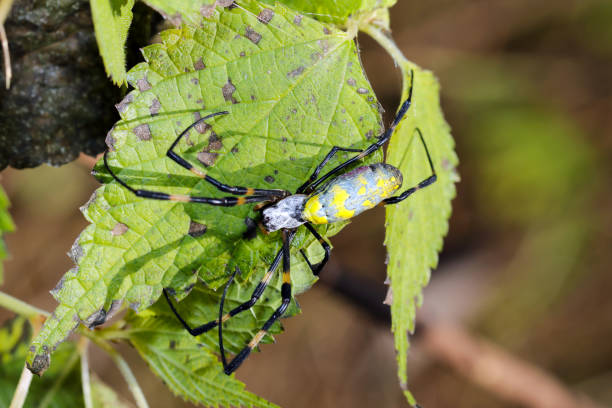
Diet
Joro spiders, much like their orb-weaving cousins, are meat-eaters. They skillfully spin webs to snag flying or leaping insects. Their menu mainly features:
– Mosquitoes
– Stink bugs
– Beetles
– Moths
– Butterflies
– Wasps
– Flies
These spiders are opportunistic feeders, meaning they’ll munch on both native and invasive insect species. Researchers are curious to see if Joro spiders could play a role in pest control.
Even though they can be quite large, Joro spiders aren’t a danger to humans or pets. Their fangs are relatively small, and they only bite when they feel threatened or trapped.
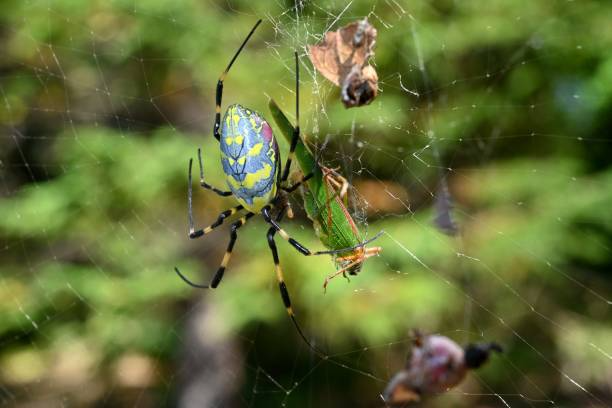
Behavior
The behavior of the Joro spider is truly captivating and often misinterpreted. Here are some key points about how they act:
- Web-building: These spiders create large, round webs that can stretch over three feet wide and shine with a golden hue. They usually spin their webs in the early morning or late evening.
- Ballooning: Young spiders, known as spiderlings, use silk to catch the breeze, allowing them to travel great distances—sometimes even hundreds of miles!
- Daytime Activity: Unlike many other spiders, Joro spiders are diurnal, meaning they’re active during the day.
- Non-aggressive Nature: These spiders are quite shy; when they feel threatened, they prefer to retreat rather than confront.
- Web Sharing: Interestingly, research indicates that male Joro spiders often take up residence in the webs of females. They typically aren’t attacked right away, which is unusual for orb-weavers.
Lifespan
The Joro spider has a one-year lifecycle, typical of many large orb-weavers:
- Egg to adult in one season
- Hatchlings emerge in spring (around April-May)
- Males mature by midsummer, while females take longer
- Mating and egg-laying happen in late summer to fall
- Adults die off by early winter, and eggs overwinter
Female spiders outlive males. They often survive until the first frost of winter. Males usually die soon after mating.
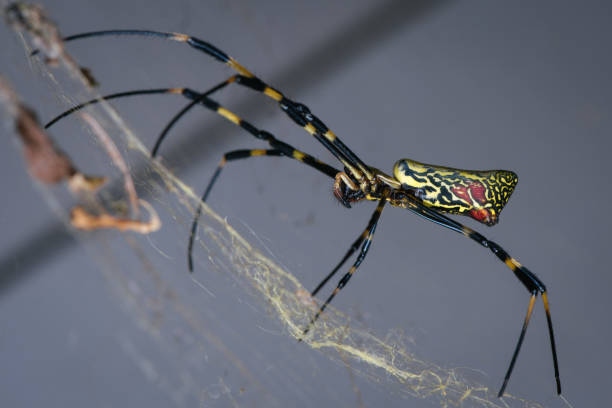
Reproduction and Lifecycle
Reproduction begins in late summer, when mature males approach females’ webs. Joro males are different from other spider species. Instead of being eaten after mating, they often mate many times. They also live alongside females for a long time.
Lifecycle Stages:
- Egg sacs are laid by females in protected areas, usually late autumn.
- Each sac may contain 400–1,500 eggs.
- Spiderlings hatch in spring and immediately disperse via ballooning.
- Over the summer, they grow rapidly through molting stages, called instars.
The eggs can withstand cold and survive winter, even in northern areas. This helps explain why their range is growing in the U.S.
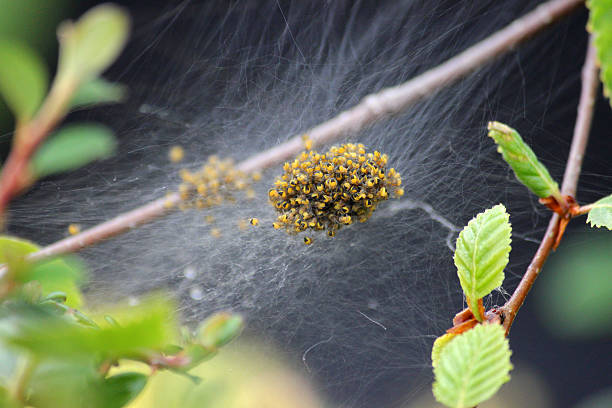
Predators
The Joro spider is big and looks brave, but it has many predators in its home and new areas.
Natural predators include:
- Birds
- Lizards
- Wasps (especially parasitic wasps)
- Small mammals
- Other spiders
Their bright colors might attract attention, but their webs are often high or hard to reach. This placement helps them avoid many predators.
Humans often panic at first, but they rarely become a real threat. Still, some urban areas have tried to remove them.
Adaptations
- Golden Silk: This silk reflects UV light, making it invisible to insects. It really helps the web do its job more effectively.
- Ballooning Dispersal: This allows young spiders to travel great distances, carried by the wind.
- Cold Tolerance: Their egg sacs and spiderlings can brave the cold winters, which helps them spread further north.
- Rapid Growth: They can go from spiderling to fully grown adult in just a few months.
- Generalist Diet: They’re not fussy eaters, which boosts their chances of survival in different environments.
- Web Durability: Their silk is stronger than that of typical orb-weavers. It can handle changing weather and even catch larger prey.
All these traits together shed light on why they thrive as an invasive species in certain parts of the U.S.
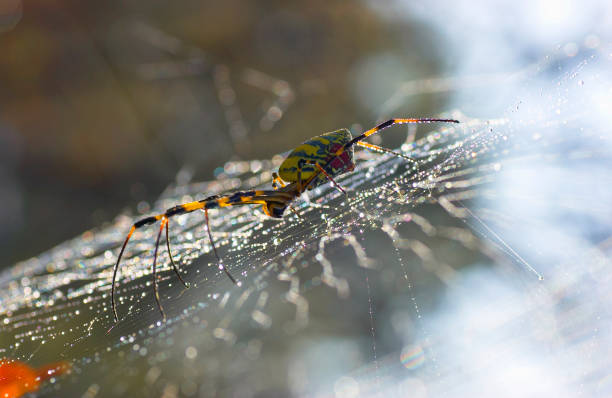
Conservation Status
The Joro spider isn’t currently classified as endangered or at risk anywhere in its native or introduced habitats. Interestingly, its invasive status in the U.S. is still under investigation. Scientists are closely monitoring a few key areas:
Ecological balance: Is there a chance it could outcompete our native orb-weavers?
Potential benefits: Could it actually help manage invasive species or agricultural pests?
Long-term impacts: Might its rapid spread throw local food webs out of whack?
At this point, there aren’t any conservation initiatives aimed at this species, whether in support or opposition. Still, its presence in North America is igniting a broader conversation about ecological health.
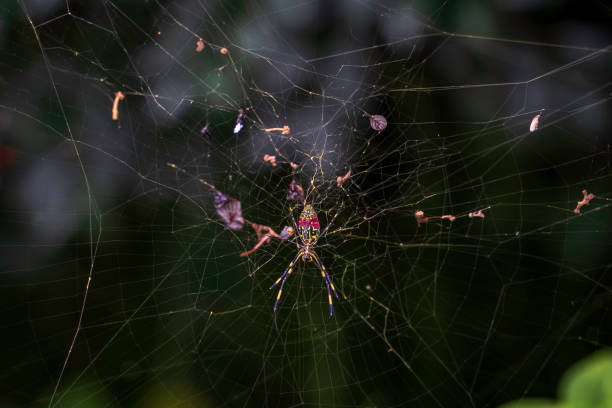
Final Thoughts
At first, the Joro spider was dubbed a “giant invasive nightmare” in the headlines. But now, this striking golden spider has transformed from an object of fear into a source of fascination. With its stunning appearance, gentle demeanor, and helpful role in pest control, it highlights the intricate beauty of nature.
The Joro spider is a testament to how ecosystems can adapt. Given the right conditions, species can carve out new homes for themselves. Whether you choose to admire the Joro spider’s shimmering golden silk from afar or spot one in your own garden, it’s evident that this spider contributes to the rich tapestry of biodiversity in the 21st century.

